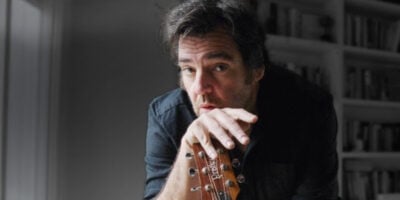In the spirit of Halloween, I spent this morning trawling through Reddit, one of the scariest corners of the internet. Deep within the formidable halls of r/music, a discussion was taking place: What is the scariest piece of music ever written?
Frightening music comes in many shapes and forms. There’s the kind of merciless chill that comes with being exposed to Ed Sheeran’s excruciating ‘Shape of You’, or there’s the to-the-bone haunting of Bernard Herrmann’s Psycho soundtrack.
Here’s what Reddit users had to say:
‘Delirium Cordia’ by Fantomas
The third studio album by the Mike Patton-led avant-garde metal act. The record consists of just one song, 74 minutes. A concept album hinged on the theme of surgery without anesthesia.
“Like the surgeon, the composer slashes open the body of his fellow man, removes his eyes, empties his abdomen of organs, hangs him up on a hook holding up to the light all of the body’s palpitating treasures sending a burst of light into its innermost depths,” the band said of the record. Grim.
‘Threnody to the Victims of Hiroshima’ by Krzysztof Penderecki
Krzystof Penderecki’s 1960 composition, penned for 52 string instruments, is undoubtedly one of the most affecting pieces of music ever penned.
“It existed only in my imagination, in a somewhat abstract way,” Penderecki said of the composition.“I was struck by the emotional charge of the work…I searched for associations and, in the end, I decided to dedicate it to the Hiroshima victims”.
The composition is a horror film staple, featuring in the likes of William Friedkin’s The Exorcist, Stanley Kubrick’s The Shining, Alfonso Cuarón’s Children of Men, and David Lynch’s Twin Peaks. Manic Street Preachers and SebastiAn have also sampled excerpts in their music.
‘Mourning Glory’ by Ween
Drawn from the irreverent rock acts 1993 major label debut, ‘Mourning Glory’ is a pulverizing garble of noise. High pitched screams, fuzzed-out vocals that sound like they were delivered into a megaphone via hell. It’s nauseating stuff.
‘Black Sabbath’ by Black Sabbath
As lore would have it, ‘Black Sabbath’ was inspired by an extramundane experience Geezer Butler had whilst playing with Earth. Butler was seduced by the occult at the time, painting his apartment black and decorating the walls with inverted crucifixes and pictures of Satan.
Ozzy Osbourne gifted Butler a black occult book, written in Latin and embellished with pictures of Satan. Butler claims that one night, after reading the book, he placed it on his bedside table before going to sleep. Upon waking, he claims to have seen a looming black figure standing at the end of his bed, staring at him. The figure vanished, and Butler found that the book he had placed on the shelf earlier was gone.
Butler relayed this story to Osbourne, and ‘Black Sabbath’ was born.
Everywhere at the End of Time by The Caretaker
In 2016, ambient musician The Caretaker, released Everywhere at the End of Time. The album, which ran to six hours in length and was released incrementely in six stages, charts the decline of a patient diagnosed with early onset dementia. Profound, disorientating and terribly upsetting.
As the record progresses, each stage is increasing atrophied. It all comes to head at the terrifying fifth stage, a tangible sense of horror and confusion.
‘Fire (Mrs O’Leary’s Cow)’ by Beach Boys
Stomach-lurching. An instrumental composed by Brian Wilson for the Beach Boys’ never-finished album, Smile. A concept built around a four-part movement that tracked the four elements: Air, Fire, Earth and Water.
Infamously, the track was recorded under oddball conditions. To evoke the feeling of fire, Wilson instructed everyone in the studio to don a fire helmet, and burned a bucket of wood in the recording space so that the area would smell of smoke.
Days after the session, Wilson learned that a nearby building had burned down, leading him to believe that somehow the recording triggered the fire. He shelved the track and the album, dubbing it “witchcraft music.”

‘Revolution 9’ by The Beatles
The Beatles most jarring, divisive song. Lennon described ‘Revolution 9’ as “an unconscious picture of what I actually think will happen when it happens, just like a drawing of revolution.”
Lennon’s eight-plus-minute avant-garde odyssey was build with around 20 sound-effect loops, including samples from ‘A Day in the Life’ and Sibelius’ Seventh Symphony. Lennon worked on the song with his then-girlfriend, Yoko Ono. Dizzying loops, people screaming, musique concrète.
The song was a favourite of Charles Manson, who would go on to draw parallels between the song’s title and the ninth chapter of the Book of Revelation, the story of a bottomless pit opening in the world, and a plague of long-haired anthropomorphic locusts invading to torture the unfaithful.

































